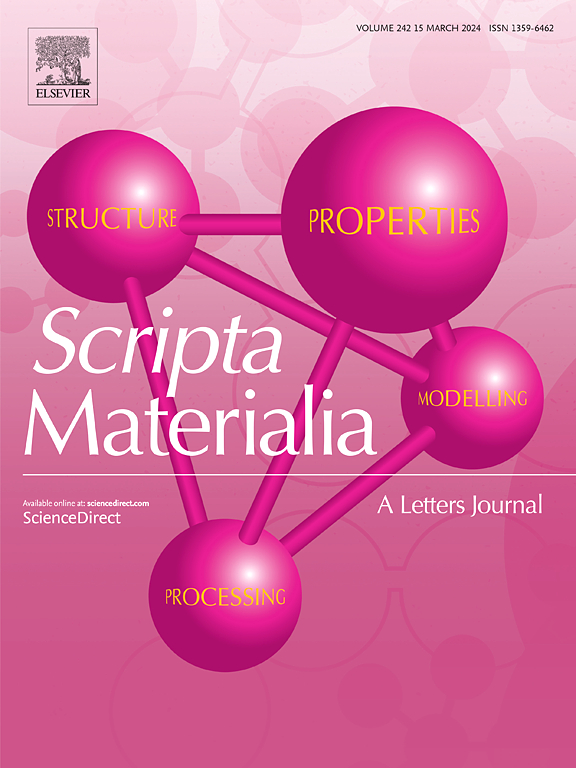利用抗高温氧化人工智能预测模型推进难熔高熵合金开发
IF 5.6
2区 材料科学
Q2 MATERIALS SCIENCE, MULTIDISCIPLINARY
引用次数: 0
摘要
难熔高熵合金(RHEAs)和复杂浓缩合金(RCCAs)对于镍基超级合金无法胜任的高温应用至关重要。预测这些合金抗氧化性的传统方法往往不准确,而且耗费大量资源。本研究采用梯度提升决策树 (GBDT) 这一人工智能技术,引入了一种新方法来预测氧化引起的比质量增加。该模型利用从大量文献中合成的数据集,以不同的合金成分和氧化条件为特征,使用带洗牌的迭代嵌套 k 倍交叉验证(INKCVS)进行训练。我们的研究结果表明,GBDT 模型在预测抗氧化性方面实现了准确性和概括能力之间的良好平衡,这一点已在选定合金的实验中得到验证。这种方法不仅提高了预测精度,还大大减少了对大量实验测试的需求,促进了新型高性能材料的快速开发。本文章由计算机程序翻译,如有差异,请以英文原文为准。

Advancing refractory high entropy alloy development with AI-predictive models for high temperature oxidation resistance
Refractory high-entropy alloys (RHEAs) and complex concentrated alloys (RCCAs) are vital for high-temperature applications beyond the capabilities of Ni-based superalloys. Traditional methods for predicting oxidation resistance in these alloys are often inaccurate and resource-intensive. This study introduces a novel approach using Gradient Boosted Decision Trees (GBDT), an artificial intelligence technique, to predict specific mass gain due to oxidation. Utilizing a dataset synthesized from extensive literature and characterized by diverse alloy compositions and oxidation conditions, the model was trained using Iterated Nested k-fold Cross Validation with Shuffling (INKCVS). Our findings demonstrate that the GBDT model achieves a good balance between accuracy and generalization capacity in predicting oxidation resistance, as validated experimentally with selected alloys. This approach not only enhances prediction accuracy but also significantly reduces the need for extensive experimental testing, facilitating rapid development of new high-performance materials.
求助全文
通过发布文献求助,成功后即可免费获取论文全文。
去求助
来源期刊

Scripta Materialia
工程技术-材料科学:综合
CiteScore
11.40
自引率
5.00%
发文量
581
审稿时长
34 days
期刊介绍:
Scripta Materialia is a LETTERS journal of Acta Materialia, providing a forum for the rapid publication of short communications on the relationship between the structure and the properties of inorganic materials. The emphasis is on originality rather than incremental research. Short reports on the development of materials with novel or substantially improved properties are also welcomed. Emphasis is on either the functional or mechanical behavior of metals, ceramics and semiconductors at all length scales.
 求助内容:
求助内容: 应助结果提醒方式:
应助结果提醒方式:


